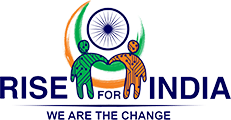[Majority of the Indian population don’t have a bank account. This is mainly because of the high minimum balance requirement and fines charged by private banks. Public banks on the other hand are inefficient and have low creditability (and high NPAs). To tackle this situation India needed the use of technology in banking services and payment bank through mobile phones (which has become a part of everyone’s life) is the best way to achieve India’s agenda of financial inclusion.]
RBI has always wanted to provide banking services to the deepest corner of the nation. This was the main objective of nationalization of banks in India. Financial inclusion being the major objective, RBI has always through its various schemes tried to induce savings in rural and sub-urban areas. But unfortunately, according to census 2011, only 58.7% of the Indians have a bank account and 37% of the branches are in rural areas. This was mainly because Indian banking industry has been ruled by private sector banks mainly because of the inefficiency of the public sector banks.
In spite of the fact, private sector banks provide good service to its customers, it cannot be denied that majority of the population cannot afford to keep a minimum balance in their savings accounts. Moreover the amount of fines and charges are also too high. This worked against the national agenda of financial inclusion. So when RBI granted licenses to 11 entities including BHARTI-AIRTEL AND VODAFONE (M-PESA) for the first time private banks nodded their heads.
Now, what are payment banks and what are its functions? Will it be the game changer?
Payment banks are banks which are expected to reach their customers through mobile phones instead of their traditional bank branches. It’s a classic blend of banking service with technology to reach each and every corner of the country.
- They can raise a deposit of up to Rs. 1 lakh and pay interest on such deposits like savings bank account.
- They can enable transfers and remittances through the mobile phone
- Money can be sent through a phone.
- However they cannot lend money and issue credits cards
- They can issue debit cards and ATMs
This is for the first time RBI is giving out distinct license for a specific activity. In the first phase, license in granted to 11 entities (mainly telecom companies). However, it is expected that a second set of such licenses will be declared soon. This is a step taken by RBI to redefine the banking system and enable financial inclusion in the country. With this step, RBI intends to target mainly the lower middle class and lower class of the society. This would ensure more savings and money in the banking system with a cost almost negligible as compared to traditional banking system which needs huge funds for setting up a branch.
However, this form of banking is also not devoid of demerit, the fact that it would be under strict control of RBI would reduce the profit margin of the entities. Moreover, its inability to offer loans reduces the mobilization of funds and thus investment opportunities to private sector.
But because of the fact that its advantages outweigh its disadvantages, it is a win-win situation towards financial inclusion of the rural sector.

